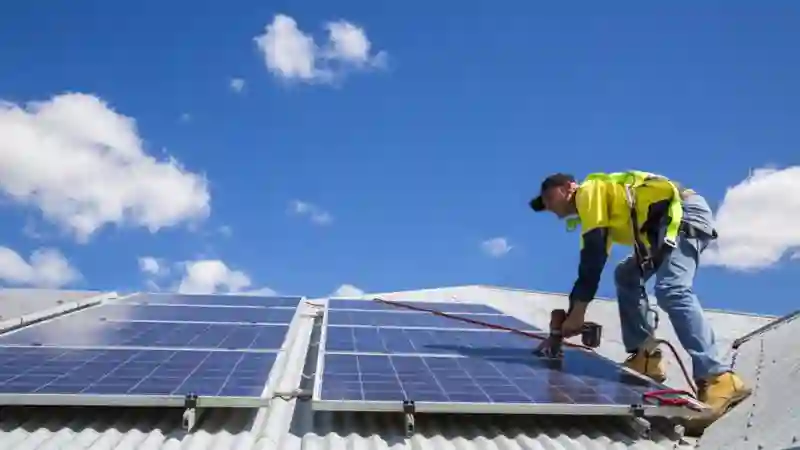Solar panels have become a mainstream solution for clean and sustainable energy production, reducing both carbon emissions and electricity bills. However, as the world faces more frequent and severe extreme weather events due to climate change, questions arise about the resilience of solar panel installations. In this comprehensive guide, we will explore the impact of extreme weather on solar panels, the measures to build resilience, and the role of solar energy in mitigating climate change.
Solar Panels and Extreme Weather
Solar panels are designed to withstand a wide range of weather conditions, including rain, snow, and strong winds. However, extreme weather events, such as hurricanes, floods, wildfires, and hailstorms, can pose significant challenges to solar panel installations. Here’s how different extreme weather conditions can affect solar panels:
1. Hurricanes and High Winds
Hurricanes and strong winds can damage solar panels by physically dislodging them or causing structural damage to mounting systems. Flying debris can also puncture or crack solar panels, reducing their efficiency.
2. Floods and Water Damage
Floods can submerge solar panel arrays and damage electrical components, posing safety risks. Water infiltration can lead to short circuits and corrosion, potentially rendering the system inoperable.
3. Wildfires
Wildfires can pose a threat to solar panel installations by generating intense heat and ash that can accumulate on the panels, reducing their efficiency. Smoke and debris from wildfires can also block sunlight, affecting energy production.
4. Hailstorms
Hail can cause physical damage to solar panels by cracking or shattering the glass surface. Severe hailstorms can lead to costly repairs or replacements.
5. Extreme Temperatures
Solar panels are generally designed to operate within a specific temperature range. Extreme heat can reduce the efficiency of solar panels, while extreme cold can affect their performance and longevity.
Building Resilience: Solar Panel Design and Installation
To withstand extreme weather events and ensure the longevity of solar panel installations, various design and installation considerations must be taken into account:
1. Mounting and Racking Systems
The choice of mounting and racking systems is crucial for the structural integrity of solar panel installations. High-quality, wind-resistant mounting systems can help secure panels during storms and high winds.
2. Secure Fastenings
Properly fastening solar panels to mounting structures is essential. Regular inspections and maintenance checks can ensure that fastenings remain secure over time.
3. Elevated Installations
Elevating solar panels above ground level can mitigate flood risks. This is particularly important in flood-prone areas where solar installations should be designed to withstand potential inundation.
4. Impact-Resistant Glass
Using impact-resistant glass or protective coverings can help protect solar panels from hail damage and debris impact.
5. Microinverters and Optimizers
Microinverters and power optimizers can enhance system performance by allowing individual panel monitoring and optimization. They also provide safety benefits, such as shutting down panels in case of electrical faults.
6. Weatherproof Electrical Components
Ensuring that electrical components are weatherproof and protected from water infiltration is crucial to prevent short circuits and system failures during heavy rain or flooding.
7. Regular Inspections and Maintenance
Routine inspections and maintenance checks can identify potential issues early and address them before they escalate. This includes cleaning panels to remove dust, dirt, and debris that can reduce efficiency.
Extreme Weather and Climate Change
The increasing frequency and severity of extreme weather events are linked to climate change. Rising global temperatures contribute to more intense heatwaves, hurricanes, and droughts. As a result, building resilience in solar panel installations is not only essential for their own longevity but also plays a role in mitigating the broader effects of climate change.
1. Reduced Carbon Emissions
Solar panels generate clean energy from sunlight, reducing the need for fossil fuels and lowering carbon emissions. By embracing solar energy, individuals, communities, and businesses contribute to mitigating the root causes of climate change.
2. Distributed Energy Generation
Solar panels support distributed energy generation, reducing the vulnerability of centralized power grids to extreme weather events. When properly designed and integrated, decentralized solar installations can enhance energy resilience during power outages caused by storms.
3. Sustainable Disaster Recovery
In the aftermath of extreme weather events, solar panels can play a crucial role in sustainable disaster recovery efforts. Solar-powered generators and charging stations can provide emergency power for essential services and communication.
4. Community Resilience
Solar panels on homes and businesses contribute to community resilience by providing backup power during emergencies. Additionally, shared solar projects and microgrids can help communities maintain access to essential services during power disruptions.
Preparing for Extreme Weather Events
To prepare for extreme weather events and build resilience in solar panel installations, consider the following steps:
1. Site Assessment
Conduct a thorough site assessment to identify potential risks associated with extreme weather in your region. Understanding the specific hazards you may face is the first step in building resilience.
2. Proper Design and Installation
Work with experienced solar installers who are knowledgeable about the local climate and weather patterns. Ensure that your solar panel system is designed and installed to withstand extreme weather events.
3. Regular Maintenance
Establish a maintenance schedule for your solar panel system to detect and address any issues promptly. This includes cleaning panels, checking fastenings, and inspecting electrical components.
4. Emergency Preparedness
Have an emergency plan in place that includes provisions for power outages and extreme weather events. Consider investing in battery storage systems to provide backup power during emergencies.
5. Stay Informed
Stay informed about weather forecasts and warnings in your area. Having access to real-time information allows you to take proactive measures to protect your solar panel installation and property.
Conclusion
Extreme weather events are becoming more frequent and severe due to climate change, posing challenges to solar panel installations. Building resilience through proper design, installation, and maintenance is essential to ensure the longevity and effectiveness of solar panel systems. Additionally, solar energy itself plays a vital role in mitigating the causes and consequences of climate change by reducing carbon emissions and enhancing energy resilience in communities. By taking proactive measures to prepare for extreme weather events, individuals and communities can harness the benefits of solar energy while minimizing risks associated with the changing climate.










